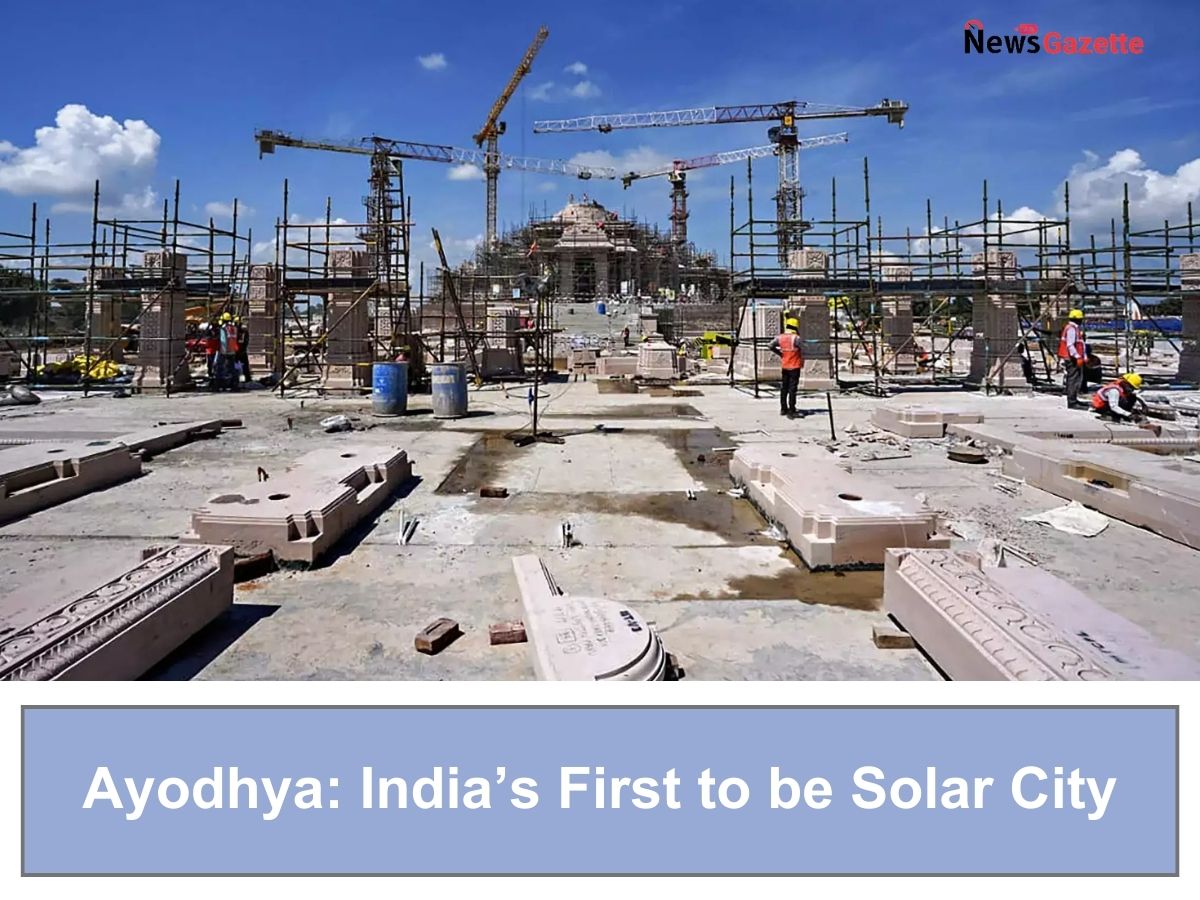
Ayodhya: India’s First to be Solar City
Ranked 1st in terms of population, India holds the responsibility to cater to the exponentially growing needs of billions of individuals. One of the fundamental needs of any country’s population is energy or electricity. To fulfill the 151.66 billion unit requirement reported in August 2023, power was harvested from nuclear, hydrothermal, and fossil fuel reserves, along with import. Of India’s 4,17,668 MW generation capacity, 56.8% is met using fossil fuel. Although viewed as a conventionally efficient source, the overconsumption of non-renewables has become a threat to the reserves and the environment as a whole. As the third largest energy consumer, the country’s dependence on fossil fuels is given. This dependence ranked India 8th in the 2023 Climate Change Performance Index report. In retaliation to the global criticism, the Indian government ramped up its efforts towards the development of sustainable energy sources. One of the game changers was the Uttar Pradesh’s Solar Energy Policy 2022. Under this policy, Ayodhya is on the path to becoming the nation’s first ‘Solar city.’
Recent policies and developmental projects have brought the city of Ayodhya to the forefront with environmental relevance. The Uttar Pradesh New and Renewable Energy Department (UPNEDA) in accordance with Uttar Pradesh’s Solar Energy Policy 2022, has drawn up plans for the adoption of solar energy into the infrastructure and transportation of the city. The proposed ideas include the transformation of the energy grid of government buildings to light-powered sources, modifying public transports as well as their famous river boats to accommodate solar panels, streetlights, and signals using similar technologies, etc.
Read Also: Tears Powered Smart Contact Lenses
The state authorities are confident to convert Ayodhya to a solar power model before January 2023. “We are confident that most of the ongoing projects in Ayodhya will be completed by January” said Anupam Shukla, Director of UPNEDA. With the expectation of inauguration on January 22, a holy day, Prime Minister Narendra Modi and dignitaries nationwide would witness the city’s splendor during the Pran Pratishtha ceremony. Having Yogi Adityanath, the chief minister, personally overseeing the building process of the plan, the expectations will soon convert to reality.
Along with significant changes, subsidies for minor solar-powered amenities like public mobile charging docks and outlets have also been set aside. In order to support these changes, the state has decided to build 16 municipal corporations as a part of ‘Solar cities’. The progress to date includes the establishment of a 40 MW solar plant near the river Saryu by NTPC Green; the finalization of development land by officials responsible at UPNEDA; installation of solar-powered streetlights and amenities along 12.9 kilometers stretch of a six-lane road- this involves the Lucknow-Ayodhya National Highway and Nayaghat region’s Lata Mangeshkar Chowk. Of the solar rooftop plans involving 117 buildings, estimated to generate up to 2.5 MW, several have entered the testing phase; the RML Awadh University rooftop panels will generate 250 kW, while those at Agriculture University and the District Court will produce 115 kW and 100 kW respectively; Lower capacity installation done so far include the Ram Katha Museum producing 58 kW and government schools giving an approximate of 50 kW.

Lauren Sargent is a seasoned professional in the field of business, finance media and chemical & materials, boasting more than two decades of experience in the digital arena. She has more than 10 years in B2B journalism. Her primary areas of expertise include business strategy development, operational management, product launches, fostering high-quality journalism, and adeptly leading teams to excellence. In Her role, he assumes responsibility for every facet of content oversight at the News Gazzete.
